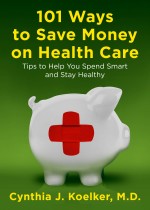It’s that time of year again – time for the annual flu shot.
Don’t think you’re a candidate? Think again.
As of 2010, the CDC (Centers for Disease Control) recommends that everyone aged six months and older receive a flu shot. Although last year’s H1N1 influenza pandemic seems to have calmed down, many young adults remain susceptible. Those aged 19 to 49 who contract this strain of influenza are at greater risk of complications than with most flu viruses, even among healthy individuals.
The 2010 vaccine offers protection against three strains of influenza virus:
- influenza A/California/7/2009 (H1N1)-like (last year’s big flu scare)
- influenza A/Perth/16/2009 (H3N2)-like
- influenza B/Brisbane/60/2008-like antigens
Should you get a flu shot this year if you had the H1N1 shot last year?
Yes, per the CDC. You’re not going to overdose on it by getting a second immunization. Consider it a booster, for better protection. In fact, children aged 6 months to 8 years who have not been previously immunized are advised to receive two doses of the immunization, and those aged 65 and older have the option of receiving a triple-strength flu shot. Remember, the vaccine is not a live vaccine, meaning you cannot contract influenza by receiving a flu shot.
Will there be vaccine shortages again this year?
Probably not. Unlike 2009 when the H1N1 vaccine was not ready until the winter months, the 2010 vaccine is already available for shipping. Since the flu season starts in October, it’s not too soon now to get immunized. Barring some unforeseen event (like last year’s H1N1 epidemic!) supplies should be adequate to immunize all appropriate patients.
Flu shots are available for about $30 at pharmacies and physician offices, but self-pay patients may find a better deal at your local health department. Both Medicare and Medicaid cover the full cost of the influenza vaccine, as do many insurance plans.
How can getting a flu vaccine save you money?
You won’t have to miss work by being ill (that’s at least $50 a day)
- You won’t have to buy medicine to treat influenza (another $50+)
- You won’t run the risk of more serious complications (potentially thousands of dollars)





